What is the difference between chickpeas and peas? - let's deal with these beans
Most people mistakenly think that chickpeas and peas are the same thing. In fact, these are completely different legumes, from the place of origin to the dishes in which they are used as an ingredient.
In the past few years, chickpeas have become a popular "fashionable" food, as chefs and food bloggers praise its properties with might and main and call it almost one of the main products in the system of proper nutrition. Let's find out how peas and chickpeas are similar and different, and why chickpeas became so famous.
The content of the article
How chickpeas differ from regular peas

Chickpeas are the so-called chickpeas. However, it is impossible to put an equal sign between chickpeas and ordinary peas, because they differ in many respects, from taste to shape. Next, we will study in detail how chickpeas differ from ordinary peas.
Difference in appearance and performance
Chickpea seeds are closer to yellow in color and have a larger diameter (up to 1 cm), in contrast to peas, and the word "tuberous" is best suited to describe its surface. Peas, as we remember, are smooth and small.
Chickpea pods include 1-2 seeds (with rare exceptions 3-4), and pea pods are oblong and can hold an average of 5-7 seeds. On this basis, they are easy to distinguish.
Differences in composition and calorie content
If speak about benefit, based on the indicators of composition and calorie content, the chickpea wins in an unofficial competition. The thing is that due to the high amount of vegetable protein contained (19.0 per 100 g of product), it is perfectly absorbed by the body, approaching in this indicator to poultry meat.
Therefore, chickpeas have long become the basis of the diet of adherents of the healthy nutrition system, vegetarians and vegans. The high fiber content also has beneficial effects on health, especially for the intestines. The composition of chickpeas in the ratio of BJU (proteins, fats, carbohydrates) looks like this: 19.0, 6.0, 61.0 with a total calorie content of the product of 364 kcal.
Note... It is not in vain that peas are nicknamed "meat for the poor" among the people. Its low purchase price is fully justified by its usefulness: for 60 kcal, peas contain 6.0 proteins, 0 fats and 9.0 carbohydrates. Peas are not at all high in calories, so their use is not dangerous for those who follow the figure. But some people note that eating a lot of it is necessary to get a feeling of fullness, and this leads to bloating.
Obviously, chickpeas are much "heavier" than peas, but their composition contains more elements necessary for the well-coordinated work of the body.
The difference in benefits and harms
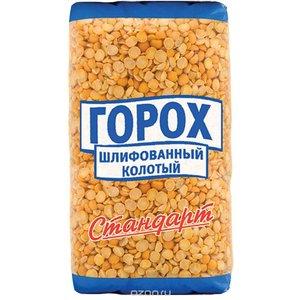 Unfortunately, nature has not yet created an absolutely useful product: each has a number of contraindications. Since chickpeas are a representative of legumes, the quite expected side effect is increased gas formation, which can grow from a slight discomfort into a big problem.
Unfortunately, nature has not yet created an absolutely useful product: each has a number of contraindications. Since chickpeas are a representative of legumes, the quite expected side effect is increased gas formation, which can grow from a slight discomfort into a big problem.
People with a weak gastrointestinal tract feel heavy after consuming it. Also, it is not recommended to eat it for those suffering from gout, cystitis, bladder ulcer, thrombophilia. As a last resort, if you want to eat chickpeas, but are afraid for your well-being, soak it in water beforehand - this will "soften" it.
Attention! Peas cause even more bloating and should be avoided by pregnant women, breastfeeding women, and the elderly. Also, due to the fact that the use of peas and chickpeas provokes an increase in the level of uric acid and the accumulation of salt, then in the presence of the previously mentioned diseases, it is worth carefully introducing it into your diet.
Thus, with a reduced intestinal tone, kidney and genitourinary system diseases, the presence of chickpeas and peas in the diet can cause complications and relapses.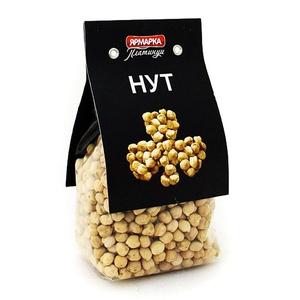
But since the negative consequences of eating legumes do not occur so often, you should pay more attention to the benefits.
The high calorie content of chickpeas makes dishes from it extremely satisfying and rich in micronutrients. Chickpeas are rich in B vitamins, calcium, magnesium and potassium, due to which regular consumption of foods with it improves the functioning of the cardiovascular system, stabilizes blood sugar levels and generally improves condition.
Peas also provide a long-lasting feeling of fullness and often become the basis for food on the so-called "fasting days". Peas are also believed to have an antioxidant effect, as the body gets rid of free radicals.
Both chickpeas and peas, when consumed 2-3 times a week, reduce the chances of malignant tumors, bring cholesterol levels back to normal and equalize blood pressure.
Did you know that chickpeas have beneficial effects on the health of our eyes? It turns out that the elements contained in chickpeas can protect the lens from clouding and thereby prevent the occurrence of cataracts. There are many programs for the prevention of certain diseases, in which chickpeas or peas are necessarily present.
What's more useful
The question of the usefulness of this or that product can be safely called philosophical, because the attitude towards food changes depending on fashion trends, scientific discoveries and trends in the field of a healthy lifestyle. Therefore, do not be surprised if, after a few years, chickpeas or peas are recognized as dangerous and almost prohibited products.
In the meantime, let's not ignore their rich composition, which undoubtedly testifies to their usefulness. But since we began to compare these legumes with each other, then we will try to identify the benefits from two different positions.
Unfortunately (or maybe, on the contrary, fortunately), it is almost impossible to conclude which of them is more useful. The effect of the usefulness of any product is determined not only by scientific knowledge, but also by the reaction of the human body.
Since each of us is unique, it is much more pleasant for someone to eat chickpeas than peas. And this choice is due, for example, not only to taste preferences, but also the state of the gastrointestinal tract, intestinal microflora and other features.
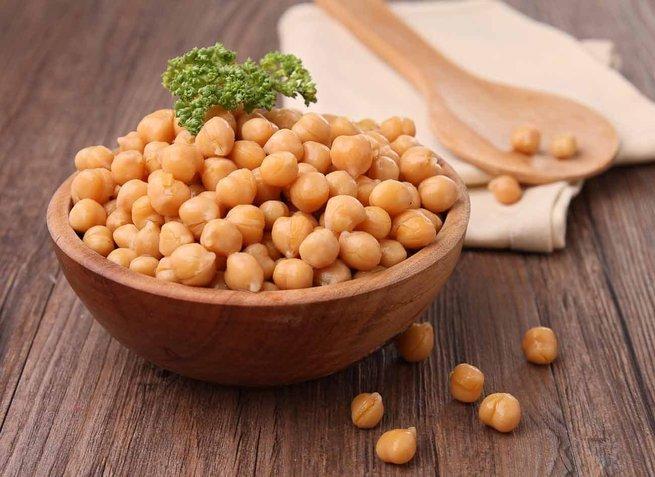
For example, chickpeas have more protein than peas. But those with poor protein absorption, or people with bladder problems, tend to skip a meal where chickpeas act as a separate or additional ingredient. For them, peas are preferable, because their calorie content is much lower, and the amount of amino acids contained is higher.
And if we talk about the benefits of peas, then the most useful is green peas, which have not yet been dried and not subjected to thermal and mechanical processing.
Its beans contain the most nutrients and substances necessary for the human body and elements that are assimilated favorably. However, some have noted that it is the fresh green garden peas that cause unwanted bloating.
Remember, if your appearance is especially important to you and you monitor your weight and physical shape, then both chickpeas and peas are real superfoods! It is believed that they contribute to weight loss. Of course, this is not the case, because we are losing weight from calorie expenditure. But with regular consumption of these legumes, you will improve the functioning of the digestive tract, and the bonus from their use will be a decrease in hunger levels.
Peas and chickpeas are very satisfying foods, you can't eat them in large quantities, but they cope perfectly with the desire to have a snack!
Read also:
We preserve the taste and useful properties all year round: pea pods.
Areas of use
Legumes are used in cooking and cosmetology.
In cooking
Both peas and chickpeas are used in cooking mainly in the cuisines of eastern countries. They are used to make side dishes and independent dishes, distinguished by their rich taste and nutritional value.Dishes made from these legumes have gained particular popularity among vegetarians, since the high protein content makes legumes an excellent alternative to meat, allowing the body to receive the substances necessary for full life.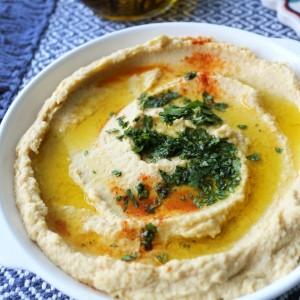
The most famous chickpea dish is hummus. This puree, obtained from ground chickpeas, various spices and oils, goes well with freshly baked bread cakes (pita) and vegetables, it is quite suitable as a sauce for meat.
Peas and chickpeas are often added to soups. In Russia and in a number of European countries, smoked pea soup is popular, which has an amazing spicy aroma that many people like. There is a recipe for a nutritious tomato and chickpea soup that is less high in calories than peas, so it is more suitable for weight watchers.
Some restaurants (bars, pubs) serve deep-fried chickpeas with spices as a snack for beer. The crispy spicy beans are more like nuts, so they go well with beer, leaving a pleasant soft aftertaste.
It should be noted that such a beer snack is less high in calories than popular nuts.
In cosmetology
For lovers of natural cosmetics and home care, chickpeas and peas will be good helpers in the fight for a healthy complexion and smooth, clean skin without breakouts.
There are many options for masks, which are usually a mixture of ground legumes, honey, lemon juice and sesame oil. They are applied to the face and décolleté for 10-15 minutes. Of course, such products do not work miracles, but regular use of masks can really give the skin softness and fill it with the necessary moisture.
Sprouted beans
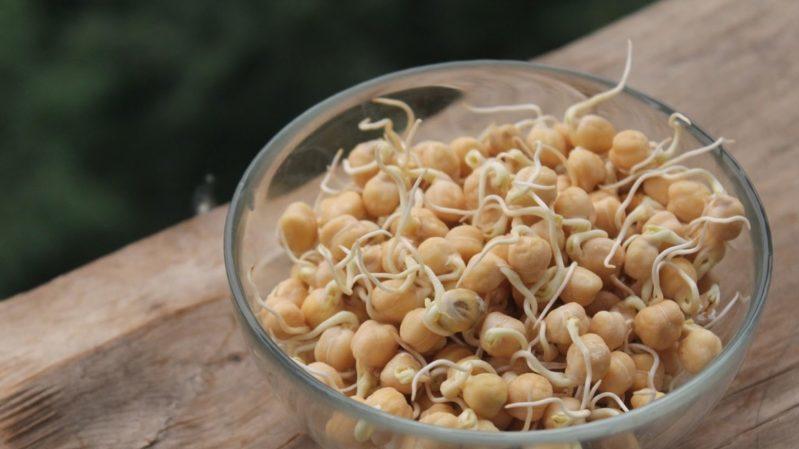
With the growing health movement, more and more people are eating sprouted seeds and grains, including peas and chickpeas. It is believed that they contain the maximum amount of nutrients that the human body assimilates.
Sprouted chickpeas and peas are added to salads and consumed as an independent product. They contain a variety of antioxidants that have anti-aging and anti-inflammatory effects.
Germinating beans is easy: rinse, place in a deep container and fill with water to completely hide them... After about 3-4 hours, when the beans are swollen, replace the water with fresh water and leave for another 8 hours. Then remove all the liquid and cover the beans with a damp cloth, under which they will be until they sprout. Dampen the cloth from time to time as needed. After sprouting, store the beans in the refrigerator and consume within 4-5 days.
Conclusion
In Ayurvedic medicine, it is generally accepted that chickpeas and peas belong to the category of drying and astringent products that promote gas formation. But do not be afraid of this, the main thing is to know about the peculiarities of your health and choose the right product.
Pay attention to the fact that the beans must be clean, intact, free from dents, stains or any other damage. And the main rule: observe the measure and listen to your body!